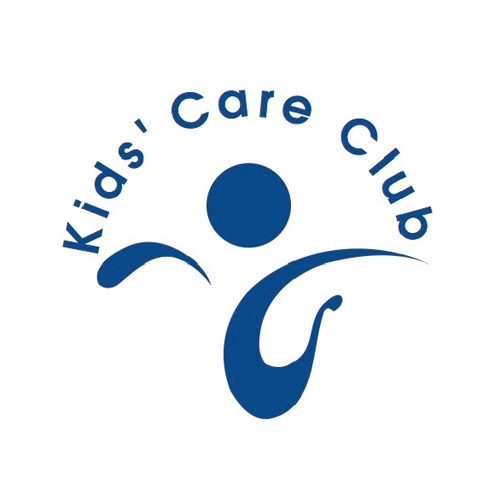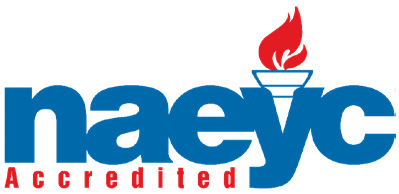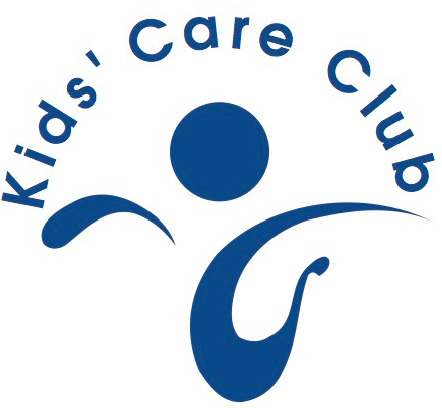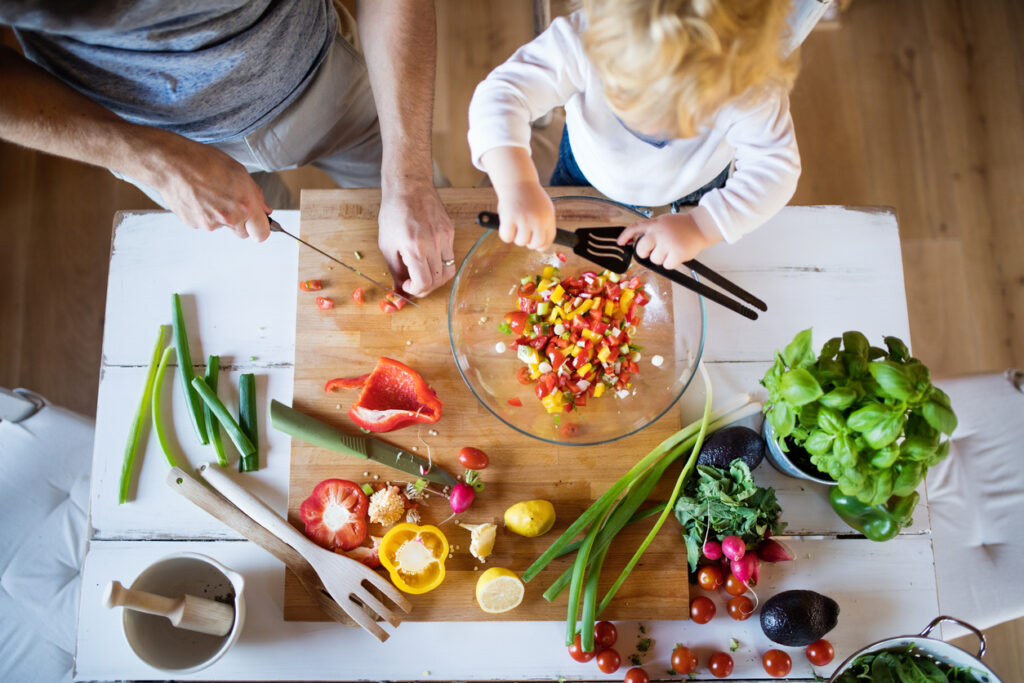Your child is starting to eat solids and is in a world of eating and flavor, how exciting! After a few considerations, your child is ready to begin exploring different meals. Let us give you some ideas for the best toddler lunches for day care.
5 Things to Keep in Mind
1. Safety First
The safety of your child is most important. Before we start brainstorming creative preschool lunch ideas your child will love, let’s cover some simple food safety tips for toddlers. Rule number one is always factor in and avoid the risk of allergies or choking.
For example, be aware that eggs, milk, and peanuts are the most common causes of food allergies in children. Many schools, like Kids’ Care Club, are nut-free facilities to avoid any risk of allergic reactions. We only allow sandwiches made with sunflower or soy nut butter, and they must be labeled.
Choking hazards should be closely considered. When eating, we recommend the following safety tips.
- Have your child sit up while eating
- Use a baby spoon or small teaspoon to feed your child.
- Always supervise while your child is eating.
- Offer a variety of soft textures.
- Be sure to give only a few pieces at one time on their tray.
- Remove bones from any meat, such as chicken and fish.
- Do not put cereal or other solids into a bottle.
Kids’ Care Club does not allow any hot dogs, popcorn, hard pretzels, raw peas, and raw carrots to ensure the safety of your child. Small foods such as grapes and cherry tomatoes should be cut in half.
2. Keep it Familiar
Your kiddo is in the exciting process of exploring a whole new world of food. It’s exciting, yet can be a little daunting and uncomfortable. Make sure to tackle any of your toddler’s concerns together by keeping their lunch at school familiar and predictable.
We recommend serving new food alongside familiar food. After all, it can take up to a dozen times for a preschool to accept a new type of food. Once you know what your toddler likes, start to incorporate ingredients that have similar color, flavor, and texture. This makes the process encourage curiosity, rather than fearing the unknown.
3. Be strategic with preparation
You know what your toddler loves, some ideas of new foods to introduce, but how will it be presented?
Toddlers need food that is cut and served in a way that they can handle and eat safely. Infants through 12 months old generally can handle food no larger than ¼-inch sized pieces, your 1 to 2-year-old can handle ½-inch pieces of food, and toddlers older than 2 years can handle bite size foods. You know your child best, so be sure to adjust accordingly.
The food is cut up and ready to be packed. Here at KCC, we’re big fans of Bento Boxes. Bento boxes make organization easy, allowing you to pack in cut foods that span across food groups. A healthy assortment of foods will be divided between dairy or other calcium-rich products, iron-fortified cereals, whole grains, fruit, vegetables, and proteins of your choice.
If the lunch you’re serving is temperature sensitive, Thermoses are perfect for keeping hot foods hot, and thin ice packs on both sides of lunch will keep your cold foods cold. We encourage you to get creative with it and consider freezing applesauce pouches, yogurt tubes, or shelf-stable milk containers to serve as ice. By the time lunch comes around, the food will have thawed out perfectly for your toddler to enjoy.
Specific feedback on how a child ate to know what they like if you need to send more food, or maybe less food.
4. Be understanding and Flexible
Different environments have different outcomes. Your toddler may be more eager to try new foods at home with you by their side. At school, trying something may scoot them out of their comfort zone. As they transition to new environments, their feeding schedule and hunger may fluctuate. This is where the importance of parent-teacher collaboration comes into play.
Here at KCC, teachers always eat with and closely monitor children during lunchtime to ensure that they are covering their nutritional demands. Your toddler’s eating patterns and any specific concerns that may arise will be noted in Learning Genie and/or directly communicated to you. With specific feedback on how your toddler ate or what foods they were most excited about will give you a stronger indication of ingredients to use or incorporate at home. On the other hand, if your toddler finishes their lunch quickly, you will know if you should add more or less food. Use this feedback from your toddler’s teachers to provide the amount and variety that your child thrives on.
5. Collaborate & Make it easy
Lastly, take the pressure off to create the perfect meal. The bumpy road in exposing your child to the world of food out there is full of twists and turns. It’s a collaborative effort full of trial and error. Trust the process, value your toddler’s response to food, involve them in the decision making for their lunches, and accommodate accordingly. As they grow older and you begin brainstorming for preschool lunch ideas, you’ll be grateful for all of the progress you’ve made and you’ll both be professional collaborators.
5 Best Toddler Lunches for Daycare
Without further ado, here are our five favorite toddler lunches for daycare.
1. Tortilla Roll Ups
You are the artist and the tortilla is the canvas! If you’re vegetarian, smear some sunflower seed butter on a whole wheat tortilla, put a banana on it, and roll it up. Opting for more protein? Swap in deli meat, cheese, mustard, spinach, and whatever else you have on hand. Take either option and slice into small bite size bits. Place your kiddos’ favorite fruits and vegetables alongside them. Check out these Banana Roll Ups for some inspiration!
2. Hummus and Pita
If you’re short on time, hummus and pita serve as a nutritious and easy meal to prepare. Cut up pita bread into 6 or 8 small wedges, and place in a Bento Box alongside their favorite hummus. Serve alongside your toddler’s favorite thinly sliced fruits and veggies. Getting feedback that it’s not quite enough food? Cube up some cheese or another protein to make it more filling and protein dense.
3. Snack Box
Who doesn’t love a box full of snacks? As another time efficient option, the minimal time and variety this offers makes it a great lunch. Get creative with what food you have on hand to cover all necessary food groups. While the foods you choose should be directed by your child’s preferences, we recommend foods like cheese (in small cubes), meat (either deli or leftover from dinner), thawed peas or corn, sliced grapes or cherry tomatoes, and your child’s favorite dry cereal. A snack box is the perfect time to sneak in a food you’ve been exposing your child to, having it surrounded by foods they know and love. Check out Yummy Toddler Food for further inspiration on snack boxes!
4. Egg Snack Box
If your child enjoys eggs, they can be a great source of protein by the time lunch comes around. Simply boil eggs ahead of time (hard-boiled eggs can keep for up to a week in the fridge) and place them alongside your child’s favorite fruits, veggies, and whole grain bread or crackers of choice. If you have some extra time on your hands and want to make things more interesting, make egg salad.
5. Toddler Taco Salad
Our fifth recommendation is Toddler Taco Salad. It offers a diverse number of ingredients, offering a lot of flexibility that can be based on the ingredients you have on hand. Feel free to use a Bento Box or simply combine ingredients all together (that’s how we like it). Use ½ cup brown rice, 2 tablespoons of beans of your choice (black and pinto are good starting points), diced veggies, cubed cheese, and salsa or guacamole. Throw some crumbled meat or remainders of dinner in there if you’d like to incorporate more protein.
Let the Adventure Begin!
We’ve equipped you with our best tips and five simple ideas to send you and your child off on this new adventure of flavor together. Exploring and introducing new foods with your child is a marathon, not a sprint, and we’re excited for your family to embark on this journey together. Our teachers are eager to assist throughout it all.








